History GK From IAS Exam 2004 and 2005:
1. Consider the following statements
(1) In the Third Battle of Panipat, Ahmed Shah Abdali defeated Ibrahim Lodi
(2) Tipu Sultan was killed in the Third Anglo-Mysore War
(3) Mir Jafar entered in a conspiracy with the English for the defeat of Nawab Siraj-ud-Daulah in the Battle of Plassey
Which of these statements are correct?
(A) 1, 2 and 3
(B) 3 only
(C) 2 and 3
(D) None
Ans: 3 only (B)
2. Which one of the following territories was not affected by the Revolt of 1857?
(A) Jhansi
(B) Chittor
(C) Jagdishpur
(D) Lucknow
Ans: Chittor (B)
3. Which one of the following pairs is not correctly matched?
(A) Pitt’s India Act: Warren Hastings
(B) Doctrine of Lapse: Dalhousie
(C) Vernacular Press Act: Curzon
(D) Ilbert Bill: Ripon
Ans: Vernacular Press Act: Curzon (C)
4. Which one of the following places did Kunwar Singh, a prominent leader of the Revolt of 1857 belongs to?
(A) Bihar
(B) Madhya Pradesh
(C) Rajasthan
(D) Uttar Pradesh
Ans: Bihar (A)
5. Consider the following Princely States of the British rule in India
(1) Jhansi
(2) Sambalpur
(3) Satara
The correct chronological order in which they were annexed by the British is
(A) 1, 2, 3
(B) 1, 3, 2
(C) 3, 2, 1
(D) 3, 1, 2
Ans: 3, 2, 1 (C)
6. Which of the following pairs are correctly matched?
| List-I (Period) | List-II (Events) |
|---|---|
| (1) AD 1767-69 | First Anglo-Maratha War |
| (2) AD 1790-92 | Third Mysore War |
| (3) AD 1824-26 | First Anglo-Burmese War |
| (4) AD 1845-46 | Second Sikh War |
Select the correct answer using the codes given below
(A) 2 and 4
(B) 3 and 4
(C) 1 and 2
(D) 2 and 3
Ans: 2 and 3 (D)
7. Consider the following Viceroys of India during the British rule
(1) Lord Curzon
(2) Lord Chelmsford
(3) Lord Hardinge
(4) Lord Irwin
Which one of the following is the correct chronological order of their tenure?
(A) 1, 3, 2, 4
(B) 2, 4, 1, 3
(C) 1, 4, 2, 3
(D) 2, 3, 1, 4
Ans: 1, 3, 2, 4 (A)
8. The name of the famous person of India who returned the Knighthood conferred on him by the British Government as a token of protest against the atrocities in Punjab in 1919 was
(A) Tej Bahadur Sapru
(B) Ashutosh Mukherjee
(C) Rabindra Nath Tagore
(D) Syed Ahmed Khan
Ans: Rabindra Nath Tagore (C)
9. Consider the following events during India’s freedom struggle
(1) Chauri-Chaura Outrage
(2) Minto-Morley Reforms
(3) Dandi March
(4) Montagu-Chelmsford Reforms
Which one of the following is the correct chronological order of the events above?
(A) 1, 3, 2, 4
(B) 2, 4, 1, 3
(C) 1, 4, 2, 3
(D) 2, 3, 1, 4
Ans: 2, 4, 1, 3 (B)
10. Consider the following statements
(1) The First Session of the Indian National Congress was held in Calcutta
(2) The Second Session of the Indian National Congress was held under the presidentship of Dadabhai Naoroji
(3) Both Indian National Congress and Muslim League held their sessions at Lucknow in 1916 and concluded the Lucknow Pact
Which of the statements given above is/are correct?
(A) 1 and 2
(B) 2 only
(C) 2 and 3
(D) 3 only
Ans: 2 and 3 (C)
11. During the Indian freedom struggle, who among the following proposed that Swaraj should be defined as complete independence free from all foreign control?
(A) Mazharul Haque
(B) Maulana Hasrat Mohani
(C) Hakim Ajmal Khan
(D) Abul Kalam Azad
Ans: Maulana Hasrat Mohani (B)
12. Which one of the following statements is correct?
(A) The Constituent Assembly of India was elected by the Provincial Assemblies in the year 1946
(B) Jawaharlal Nehru, M.A.Jinnah and Sardar Vallabhbhai Patel were members of the Constituent Assembly of India
(C) The First Session of the Constituent Assembly of India was held in January 1947
(D) The Constitution of India was adopted on 26th January 1950
Ans: The Constituent Assembly of India was elected by the Provincial Assemblies in the year 1946 (A)
13. The Montagu-Chelmsford Report formed the basis of
(A) the Indian Councils Act, 1909
(B) the Government of India Act, 1919
(C) the Government of India Act, 1935
(D) the Indian Independence Act, 1947
Ans: the Government of India Act, 1919 (B)
14. Consider the following statements
Some of the main features of the Government of India Act, 1935 were the
(1) abolition of diarchy in the Governor’s provinces
(2) power of the Governors to veto legislative action and to legislate on their own
(3) abolition of the principle of communal representation
Which of the statements given above is/are correct?
(A) 1 only
(B) 1 and 2
(C) 2 and 3
(D) 1, 2 and 3
Ans: 1 and 2 (B)
15. With reference to ancient Jainism, which one of the following statements is correct?
(A) Jainism was spread in south India under the leadership of Sthalabahu
(B) The Jains who remained under the leadership of Bhadrabahu were called Shvetambaras after the council held at Pataliputra
(C) Jainism enjoyed the patronage of the Kalinga king Kharaavela in the first century B.C
(D) In the initial stage of Jainism, the Janias worshipped images unlike the Buddhist
Ans: Jainism enjoyed the patronage of the Kalinga king Kharaavela in the first century B.C (C)
16. Which one of the following four Vedas contains an account of magical charms and spells?
(A) Rigveda
(B) Yajurveda
(C) Atharvaveda
(D) Samaveda
Ans: Atharvaveda (C)
17. Consider the following statements
(1) The Chinese pilgrim Fa-Hien attended the fourth Great Buddhist Council held by Kanishka
(2) The Chinese pilgrim Hiuen-Tsang met Harsha and found him to be antagonistic to Buddhism
Which of the statements given above is/are correct?
(A) 1only
(B) 2 only
(C) Both 1 and 2
(D) Neither 1 nor 2
Ans: Neither 1 nor 2 (D)
18. How did the dynasty of Nizam Shahis of Ahmadnagar come to an end?
(A) Ahmadnagar was annexed into Mughal empire and Hussain Shah was given life imprisonment
(B) Mughal troops destroyed Daulatabad fort and killed Nizam-ul Mulk of Ahmadnagar
(C) Fateh Khan usurped the throne from Nizam-ul-Mulk
(D) Malik Ambar was defeated in a battle with Mughals in 1631 and the entire royal family was killed by the Mughal troops
Ans: Ahmadnagar was annexed into Mughal empire and Hussain Shah was given life imprisonment (A)
19. Who was the last ruler of the Tughlaq dynasty of the Delhi Sultanate?
(A) Firoz Shah Tughlaq
(B) Ghiyas-ud-din Tughlaq Shah II
(C) Nasir-ud-din Mahmud
(D) Nasrat Shah
Ans: Nasir-ud-din Mahmud (C)
20. Consider the following statements
(1) Narasimha Saluva ended the Sangama dynasty and seized the throne for himself and started the Saluva dynasty
(2) Vira Narasimha deposed the last Saluva ruler and seized the throne for himself
(3) Vira Narasimha was succeeded by his younger brother, Krishnadeva Raya
(4) Krishnadeva Raya was succeeded by his half brother, Achyuta Raya
Which of the statements given above is/are correct?
(A) 1, 2 and 3
(B) 2, 3 and 4
(C) 1 and 4
(D) 1, 2, 3 and 4
Ans: 1, 2, 3 and 4 (D)
21. Which one of the following sequences indicates the correct chronological order?
(A) Shankaracharya-Ramanuja-Chaitanya
(B) Ramanuja-Shankaracharya-Chaitanya
(C) Ramanuja-Chaitanya-Shankaracharya
(D) Shankaracharya-Chaitanya-Ramanuja
Ans: Shankaracharya-Ramanuja-Chaitanya (A)
22. Consider the following statements about Sikh Gurus
(1) Banda Bahadur was appointed as the military leader of the Sikhs by Guru Tegh Bahadur
(2) Guru Arjun Dev became the Sikh Guru after Guru Ram Das
(3) Guru Arjun Dev gave to Sikhs their own script Guru Mukhi
Which of the statements given above is/are correct?
(A) 1only
(B) 2 and 3
(C) 1 and 3
(D) 1 and 2
Ans: 2 and 3 (B)
23. Consider the following statements
(1) Warren Hastings was the first Governor-General who established a regular police force in India on the British pattern
(2) A Supreme Court was established at Calcutta by the Regulating Act, 1773
(3) The Indian Penal Code came into effect in the year 1860
Which of the statements given above are correct?
(A) 1 and 2
(B) 2 and 3
(C) 1 and 3
(D) 1, 2 and 3
Ans: 2 and 3 (B)
24. Which one of the following is the correct statement?
(A) The modern Kochi was a Dutch colony till India’s independence
(B) The Dutch defeated the Portuguese and built Fort Wiliams in the modern Kochi
(C) The modern Kochi was first a Dutch colony before the Portuguese took over
(D) The modern Kochi never became a part of a British colony
Ans: The Dutch defeated the Portuguese and built Fort Wiliams in the modern Kochi (B)
25. Who among the following repealed the Vernacular Press Act?
(A) Lord Dufferin
(B) Lord Ripon
(C) Lord Curzon
(D) Lord Hardinge
Ans: Lord Ripon (B)
26. Consider the following statements
(1) Ishwar Chandra Vidyasagar founded the Bethune School at Calcutta with the main aim of encouraging education for women
(2) Bankim Chandra Chattopadhyay was the first graduate of the Calcutta University
(3) Keshav Chandra Sen’s campaign against Sati led to the enactment of a law to ban Sati by the Gvernor General
Which of the statements given above is/are correct?
(A) 1 only
(B) 1 and 2
(C) 2 and 3
(D) 1, 2 and 3
Ans: 1 and 2 (B)
27. Who among the following was a proponent of Fabianism as a movement?
(A) Annie Besant
(B) A.O.Hume
(C) Michael Madhusudan Dutt
(D) R.Palme Dutt
Ans: Annie Besant (A)
28. Which one of the following is the correct chronological order of the battles fought in India in the 18th Century?
(A) Battle of Wandiwash- Battle of Buxar- Battle of Ambur- Battle of Plassey
(B) Battle of Ambur- Battle of Plassey- Battle of Wandiwash- Battle of Buxar
(C) Battle of Wandiwash- Battle of Plassey- Battle of Ambur- Battle of Buxar
(D) Battle of Ambur- Battle of Buxar- Battle of Wandiwash- Battle of Plassey
Ans: Battle of Ambur- Battle of Plassey- Battle of Wandiwash- Battle of Buxar (B)
29. In October 1920, who headed a group of Indians gathered at Tashkent to set up a communist party of India?
(A) H.K. Sarkar
(B) P.C. Joshi
(C) M.C. Chagla
(D) M.N. Roy
Ans: M.N. Roy (D)
30. Who among the following was not associated with the formation of U.P. Kisan Sabha in February 1918?
(A) Indra Narain Dwivedi
(B) Gauri Shankar Misra
(C) Jawaharlal Nehru
(D) Madan Mohan Malviya
Ans: Jawaharlal Nehru (C)
31. In which one of the following provinces was a Congress ministry not formed under the Act of 1935?
(A) Bihar
(B) Madras
(C) Orissa
(D) Punjab
Ans: Punjab (D)
32. At which Congress session was the working committee authorised to launch a programme of Civil Disobedience?
(A) Bombay
(B) Lahore
(C) Lucknow
(D) Tripura
Ans: Lahore (B)
33. Who drafted the resolution on fundamental rights for the Karachi Session of Congress in 1931?
(A) Dr. B.R.Ambedkar
(B) Pandit Jawaharlal Nehru
(C) Dr. Rajendra Prasad
(D) Sardar Vallabhbhai Patel
Ans: Pandit Jawaharlal Nehru (B)
34. Where were the Ghadar revolutionaries, who became active during the outbreak of World War I based?
(A) Central America
(B) North America
(C) West America
(D) South America
Ans: North America (B)
35. Which of the following pairs are correctly matched?
| Movement/Satyagraha | Person Actively Associated With |
|---|---|
| (1) Champaran | First Anglo-Maratha War |
| (2) Ahmedabad Mill Workers | Third Mysore War |
| (3) Kheda | First Anglo-Burmese War |
Select the correct answer using the codes given below
(A) 1 and 2
(B) 2 and 3
(C) 1 and 3
(D) 1, 2 and 3
Ans: 1 and 3 (C)
36. Consider the following statements
On the eve of launch of Quit India Movement, Mahatma Gandhi:
(1) asked the government servants to resign
(2) asked the soldiers to leave their posts
(3) asked the Princes of the Princely states to accept the sovereignty of their own people
Which of the statements given above is/are correct?
(A) 1 and 2
(B) 2 and 3
(C) 3 only
(D) 1, 2 and 3
Ans: 3 only (C)
37. Consider the following statements
(1) In the First Round Table Conference, Dr. Ambedkar demanded separate electorates for the depressed classes
(2) In the Poona Act, special provisions for the representation of the depressed people in the local bodies and civil services were made
(3) The Indian National Congress did not take part in the Third Round Table Conference
Which of the statements given above is/are correct?
(A) 1 and 2
(B) 2 and 3
(C) 1 and 3
(D) 1, 2 and 3
Ans: 1 and 3 (C)
38. Which party was founded by Subash Chandra Bose in the year 1939 after he broke away from the Congress?
(A) Indian Freedom Party
(B) Azad Hind Fauj
(C) Revolutionary Front
(D) Forward Bloc
Ans: Forward Bloc (D)
39. Consider the following statements
(1) Lord Mountbatten was the Viceroy when the Shimla conference took place
(2) Indian Navy Revolt, 1946 took place when the Indian sailors in the Royal Indian Navy at Bombay and Karachi rose against the Government
Which of the statements given above is/are correct?
(A) 1 only
(B) 2 only
(C) Both 1 and 2
(D) Neither 1 nor 2
Ans: 2 only (B)
40. Consider the following statements
The Government of India Act, 1935 provided for
(1) the provincial autonomy
(2) the establishment of a Federal court
(3) all India Federation at the centre
Which of the statements given above are correct?
(A) 1 and 2
(B) 2 and 3
(C) 1 and 3
(D) 1, 2 and 3
Ans: 1, 2 and 3 (D)
41. Who among the following was not a contemporary of the other three?
(A) Bimbsara
(B) Gautama Buddha
(C) Milinda
(D) Prasenjit
Ans: Milinda (C)
- Air Pollution- Causes, Effects, and Control Measures
- Water Pollution- Causes, Effects, and Control Measures
- Solid Waste Management
- Plant Cell and Animal Cell
- Important Biogeochemical Cycles
- Global Warming: Effects and Control Measures
- Disaster Management
- Theories of Evolution: From Tamil Board Book
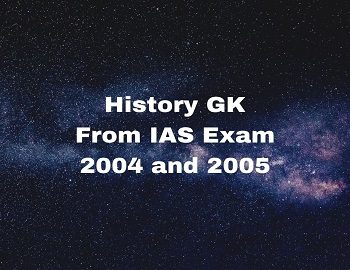
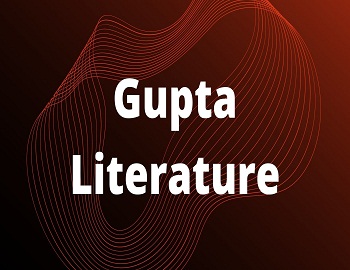


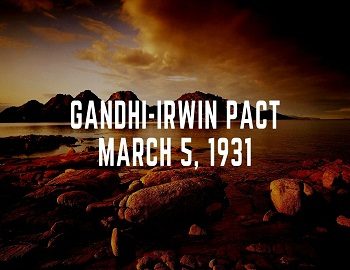

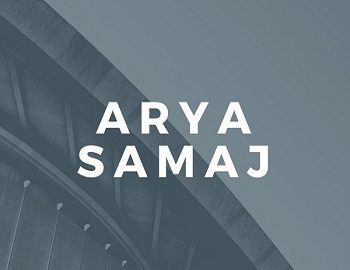

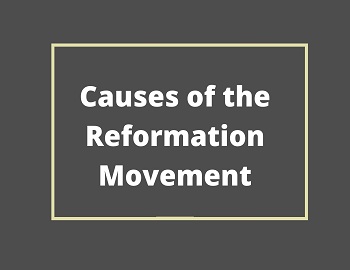
Comments (No)